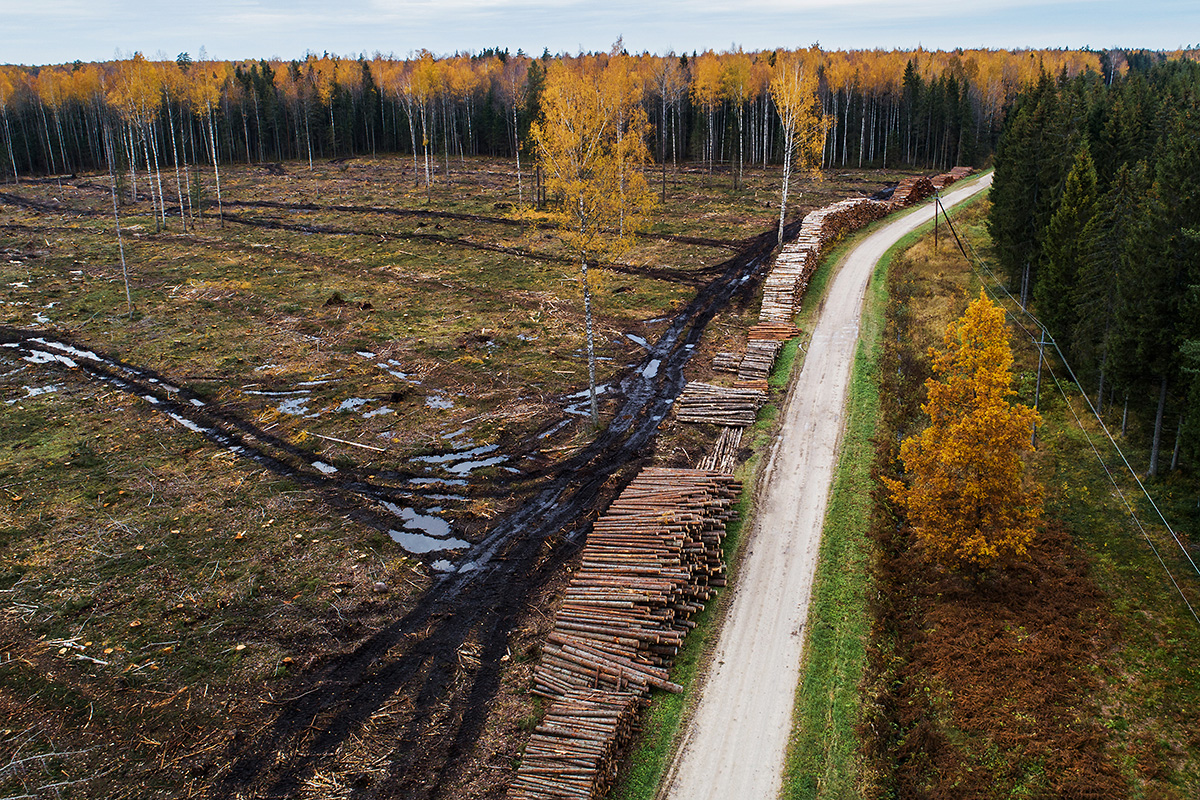Everywhere in the Estonian state forest, a felling peace is in force from mid-April to mid-June

Sustainable forest management means growing, using, managing, and protecting forests in such a way as to ensure biodiversity, forest productivity, regeneration and viability, and the possibility of diversified forest use that meets ecological, economic, social, and cultural needs. Biodiversity is one of the main components of sustainable forestry.
Biodiversity considerations in Estonia are closely integrated into legislation related to sustainable forestry – mainly the Forest Act and the Nature Conservation Act. Under the Nature Conservation Act, sustainable forest management takes place on about a quarter (25%) of forest land, including that on about 14% of forest land, it has been decided that the development of the forest ecosystem will be left to nature, to be managed without much human intervention. Commercial forests – forests where sustainable forest management is more widely permitted under the Forest Act – have a number of measures aimed at protecting the biota.
The growing of forests takes place through timely felling and careful planning. There are very different types of felling, but they are mostly divided into regeneration cutting, improvement cutting, and selective cutting. The method of cutting is chosen according to the need and it depends above all on the age of the forest, the composition of the tree species, growth site, and the goals of the owner. For biodiversity reasons, Estonia has established specific requirements and criteria for each type of cutting. For example, regeneration cutting can be carried out in a forest that has reached a certain age or where the trees have grown to a certain diameter. For example, cutting may not be carried out in a pure pine stand that is less than 90 years old and where the average thickness of the trees, measured at chest height, is less than 28 cm. In Estonia, these criteria are stricter than they would be if only economic aspects were considered. And not all countries have these minimum cutting requirements.
Deforestation is the activity with the most negative impact on biota. That is cutting the aim of which is not sustainable forest management for the future, but preparing the land for other purposes. Instead of growing a forest, land is used either as agricultural land, for the expansion of settlements, construction of infrastructure, mining mineral resources, etc.
Old crop trees must be retained during regeneration and selective cutting to promote and support the biota. Old crop trees, i.e. trees necessary to ensure biodiversity, or their preserved upright parts must be left with a total volume of at least five cubic meters per hectare, and on a cutting area of more than five hectares, at least ten cubic meters per hectare. Old crop trees are selected from the trees with the largest diameter from among different tree species, preferring hardwoods, pines, and aspens, as well as trees with special characteristics, such as burn marks, hollows, branch nests, or large branches. Old crop trees will remain in the forest forever. Our forest inventories show that the amount of dead wood necessary for biota in our forests has increased over the decades [1].
In order to support and promote the rapid renewal and recovery of the forest ecosystem, the Forest Act imposes an obligation on forest owners to ensure post-harvest forest recovery and the planting of a new forest generation with the help of forest regeneration techniques.
The principles of the designation and protection of key habitats have also been introduced in Estonia through the Forest Act. A key habitat is an area where narrowly adapted, endangered, vulnerable, or rare species are likely to occur. Key habitats are strictly protected in the state forest and in the forests owned by legal persons in public law. Strict protection of key habitats in private forests is voluntary and a private forest owner can enter into a corresponding protection agreement with the state. On the other hand, a private forest owner may also organise the protection of both key habitats and the wider biota independently. Numerous studies have also shown that the goals of many private forest owners are not linked to the financial returns from the forest [2].
In connection to the breeding season of birds and animals, a felling peace has been established in the Estonian state forests from mid-April to mid-June since 2002. Its purpose is to protect the environment during the period of natural renewal to ensure the protection of birds, animals, and forest soils, and to reduce the spread of fungal diseases. During this time, cutting works are suspended and only planting, maintenance of young growth, clearing of forest rides, and other minor forest maintenance works may be carried out. The exception is cutting in damaged forests and dry pure pine stands to prevent the spread of diseases and pests. In private forests, the bird peace is voluntary, but surveys show that almost 95% of private forest owners would agree to maintain cutting peace voluntarily in the forest during bird nesting [3].
In our private forests investments aimed at increasing the economic, ecological, social, and cultural values of the forest, as well as silvicultural work, including the preservation of heritage culture and key habitats, and work to improve the forest are supported. A support system for private forest owners has been developed, consisting of forest cooperatives, which supports, among other things, advising forest owners on sustainable forestry issues [4].
Biodiversity-friendly sustainable forest management is ensured in Estonia through the state’s forest and nature conservation policy.
Last modified: 12.01.2022
_________________________________________________
[1] Aitsam, V., Sims, A., jt. 2019. Statistiline mets. 20 aastat statistilist metsainventeerimist Eestis. Keskkonnaagentuur. Tallinn.
[2] https://www.sciencedirect.com/science/article/pii/S1389934117301351
[3] https://www.eramets.ee/wp-content/uploads/2019/10/Erametsaomanike-uuringu-2019-aruanne.pdf